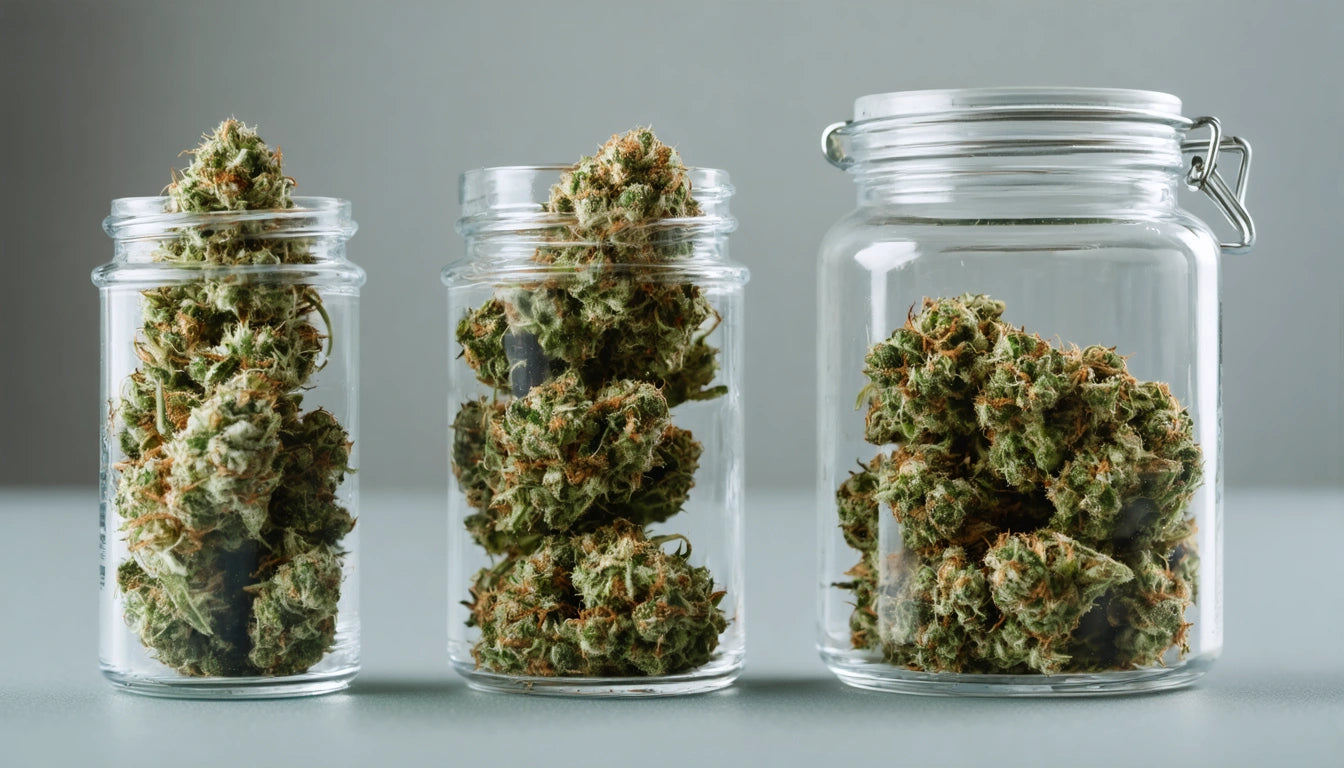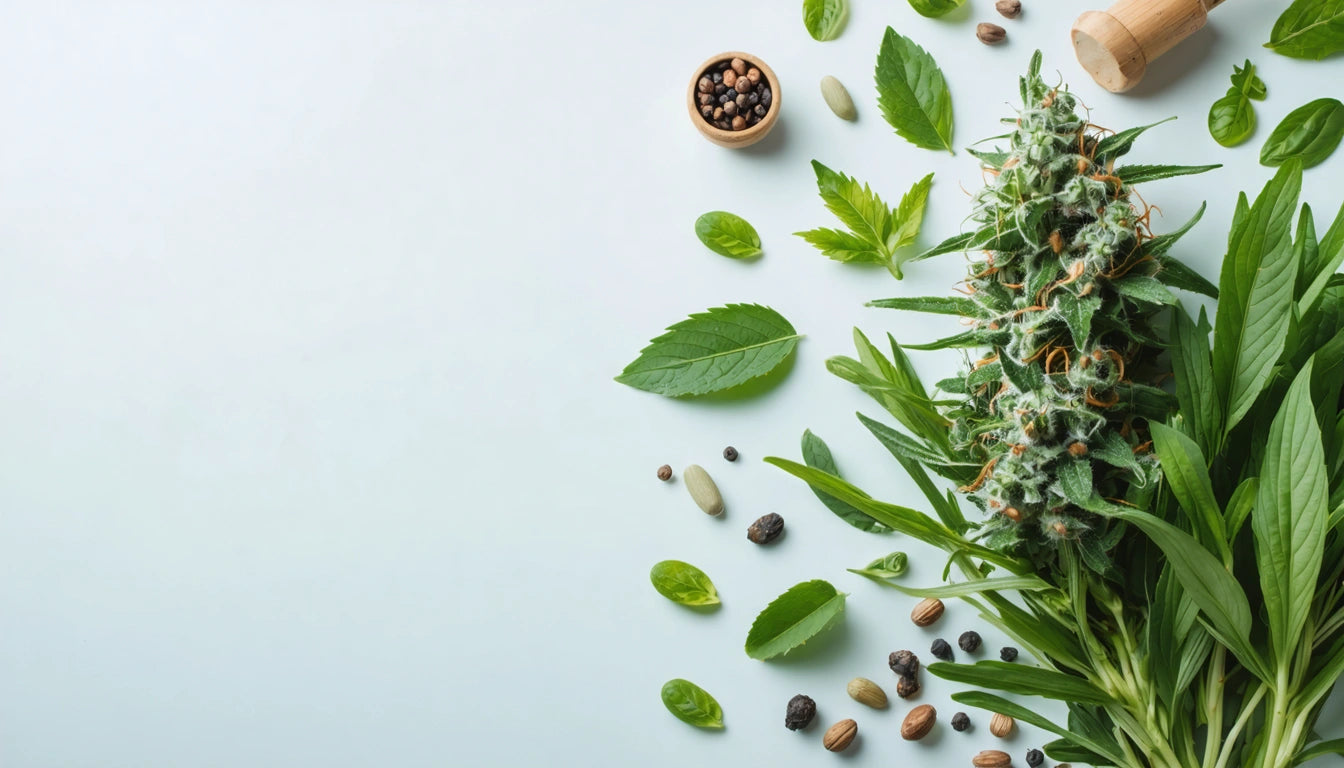Table of Contents
Understanding Weed Measurements and Prices: A Guide to Grams
Whether you're new to cannabis or looking to better understand pricing structures, knowing how weed measurements work is essential for making informed purchases. From single grams to eighth-ounces (3.5g), the cannabis industry uses a unique hybrid of metric and imperial measurements that can initially seem confusing.
Understanding Basic Cannabis Measurements
Cannabis is typically sold in gram increments, with larger quantities measured in ounces. This mixed measurement system stems from the industry's evolution through both legal and illegal markets over decades.
The basic measurement hierarchy includes:
- 1 gram (1g) - The smallest commonly sold quantity
- Eighth (3.5g) - One-eighth of an ounce
- Quarter (7g) - One-quarter of an ounce
- Half (14g) - Half an ounce
- Ounce (28g) - Full ounce
Between these standard measurements, you'll also find retailers selling 2g, 2.5g, 3g, 4g, and 5g quantities to provide flexibility for consumers with different needs and budgets.
Common Weed Quantities and Their Prices
How Much is 1g of Weed?
A single gram is the cannabis equivalent of a sample size. It typically yields 1-2 joints or 2-3 bowl packs. Price ranges vary significantly by location, quality, and dispensary, but generally fall between $10-20. For more detailed information on single gram pricing, this guide provides comprehensive cost breakdowns.
How Much is 3.5g of Weed?
The 3.5g quantity (an eighth) is among the most popular purchase sizes. It provides enough cannabis for approximately 7-10 joints or 10-15 bowl packs. Pricing typically ranges from $25-60 depending on quality and location. Many dispensaries offer special pricing on eighths, making them more economical than buying the equivalent in single grams.
How Much is 5g of Weed?
A 5g purchase falls between standard eighth and quarter measurements. This quantity typically costs $40-80 depending on strain quality and market location. For budget-conscious consumers, understanding the price differences between 3.5g and 5g can help maximize value.
Visual Comparisons: How Big is Each Measurement?
Understanding the physical size of different cannabis quantities can help consumers visualize what they're purchasing:
How Big is 3.5g of Weed?
An eighth (3.5g) typically fills about half of a standard prescription bottle or fits comfortably in the palm of your hand. Dense strains may appear smaller while fluffier strains look more substantial despite weighing the same.
How Big is 5g of Weed?
5g of cannabis is approximately 40% more than an eighth. Visually, it might fill two-thirds of a prescription bottle or form a substantial pile roughly the size of a golf ball when ground. The exact volume varies significantly based on the density and moisture content of the specific strain.
For smaller measurements, 2.5g would be visually about 70% of an eighth, while 4g appears only slightly larger than an eighth but provides an extra half-gram of product.
Factors Affecting Cannabis Pricing
Several variables influence how much you'll pay for cannabis:
- Potency and Quality: Higher THC percentages and premium strains command higher prices
- Market Location: Legal states with mature markets typically have lower prices than newly-legal or limited-license states
- Indoor vs. Outdoor Growing: Indoor-grown cannabis typically costs more due to higher production expenses
- Taxes: State and local cannabis taxes significantly impact final pricing
- Brand Positioning: Premium brands charge more for similar products based on reputation and packaging
Understanding these factors helps explain why the same quantity might cost differently across dispensaries or states. For a deeper dive into pricing structures, this resource provides detailed market comparisons.
Responsible Storage and Handling Guidelines
Once you've purchased your cannabis, proper storage becomes essential for maintaining potency and preventing unauthorized access. As safety standards for consumer products highlight, proper packaging plays a crucial role in preventing accidental consumption, especially in households with children.
For optimal storage:
- Keep cannabis in its original child-resistant packaging
- Store in cool, dark places away from direct sunlight
- Use airtight containers to preserve freshness
- Keep all cannabis products clearly labeled with content and potency
- Store securely away from children and pets
Many states require dispensaries to use certified child-resistant packaging similar to what's used for prescription medications. These safety measures are designed to prevent accidental ingestion while still allowing adult consumers to access their purchases.
Understanding cannabis measurements helps consumers make informed decisions about quantity, value, and responsible consumption. Whether purchasing 1g for sampling or 5g for extended use, knowing what to expect in terms of volume, price, and proper handling ensures a positive and safe experience.











Leave a comment
All comments are moderated before being published.
This site is protected by hCaptcha and the hCaptcha Privacy Policy and Terms of Service apply.